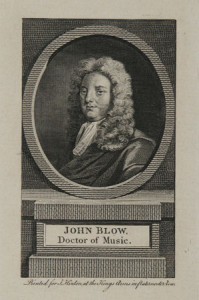At the Crossroads Between Masque and Opera
 Magnificat’s 2010-2011 season will open with a concert production of John Blow’s Venus and Adonis on the weekend of October 8-10. Venus and Adonis is generally considered the earliest surviving ‘opera’ in the English language but as Bruce Wood notes in his excellent introduction to the Purcell Society’s recent parallel edition of the two versions of the work, Venus and Adonis is also the last English court masque: the end of a line stretching back to the origins of the masque at the court of Henry VIII.
Magnificat’s 2010-2011 season will open with a concert production of John Blow’s Venus and Adonis on the weekend of October 8-10. Venus and Adonis is generally considered the earliest surviving ‘opera’ in the English language but as Bruce Wood notes in his excellent introduction to the Purcell Society’s recent parallel edition of the two versions of the work, Venus and Adonis is also the last English court masque: the end of a line stretching back to the origins of the masque at the court of Henry VIII.
By the time of Charles I, the masque was characterized by spectacular staging, sophisticated machines and painted scenery, the incorporation into a spoken play of a succession of musical “entries”, and the inclusion, towards the end of the entertainment, of the revels, the sequence of social rather than choreographic dances in which members of the audience joined; and the participation of royalty and nobility among the cast. As Wood notes,
“In Venus and Adonis only one of these masquing conventions – the participation of royalty – remains in force, though the Cupids’ Lesson in Act II is perhaps related to the comic aspect of the antimasque, and a vestige of the revels may be descried in the succession of dances at the end of the act. No scenes or machines are specified in any source of the work, and the only props required are the couch upon which Venus and Adonis dally in Act I and the “magazine of beauty”, Venus’s box of cosmetics, in Act II.
The interwoven poetic and musical structure of the Jacobean and Caroline masque has been replaced by the prologue and three acts typical of French operas of the 1670s and 1680s and, like them, the work is all-sung; in this latter respect it has only one antecedent among English court masques, Ben Jonson’s Lovers Made Men (1617), of which, alas, the music, by Nicholas Lanier, is lost in its entirety.
Venus and Adonis thus stands at the crossroads between masque and opera; its importance is enhanced by the fact that it served Purcell as the model for Dido and Aeneas.”